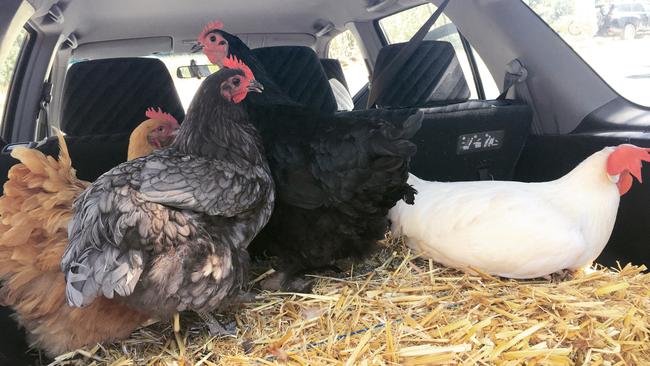Clucky for some: domestic chicken diversity
As a hobbyist, I can attest to the pleasure of domestic poultry diversity.

I keep chickens for their brilliant eggs, for my sanity, and for the enduring pleasure of cleaning the henhouse. Not for meat. But the birds have been a bit stressed with the recent heatwave, and that’s meant fewer omelettes.
One – a very productive little Isa Brown – carked it over summer while on homestay with friends. And whatever the reason for her demise, it was on a farm, with mates, in lovely free-ranging circumstances. Vale Ginger II. That leaves two Buff Orpingtons, an Australorp, a Blue Australorp and a most curious Leghorn, whose pair, sadly, was the latest victim of a #@$%#@! fox.
As a hobbyist, I can attest to the pleasure of domestic poultry biodiversity. It’s fun. Of course, when it comes to meat poultry, it’s fake science. Just about every chicken eaten in Australia, regardless of how it was reared, is a Cobb or a Ross – breeds developed for nothing more than obscenely rapid growth via constant feeding.
We have proselytised on this subject previously. And championed the work of Michael and Kathryn Sommerlad, whose persistence with breeding a hybrid meat chicken suitable for Aussie conditions has sparked a quiet revolution in food circles. To recap, Michael came out of the conventional chicken industry convinced the genetics of a number of egg-producing species could be harnessed to create a meat bird that foraged, roamed, ate a diversity of naturally occurring and supplied foods – and, as free-ranging birds, could handle the Australian heat.
Anecdotally, we’ve been told the heatwave caused a lot of chicken deaths in free-range farms using conventional breeds. Conversely, the Sommerlad birds’ “genetic resilience keeps them perky outside on pasture even on the fiercest of days” says Sydney meat supplier Feather & Bone, based on its conversations with growers.
I reckon these conditions make the Sommerlad story even more relevant and newsworthy and there’s a lesson to be learnt here for our future food security.
We heard about the heatwave mortality the same day we heard about a misguided NSW schools program in league with Steggles, a major player in Australia’s annual half-billion bird chicken industry. “Thirteen hundred day-old chicks will be delivered to 91 NSW schools participating in the 2017 Steggles School Meat Bird Pairs Competition run by the Royal Agricultural Society of NSW,” the press release said, and Steggles would supply “fluffy baby chickens”. Sweet.
Each school will get 14 chicks bred to do nothing but eat and grow, eat and grow. The kids will learn that winning is all about how much weight a chicken can put on in six weeks. (That’s typical slaughter age.) They’ll “design a feed plan to maximise growth before submitting two pairs for judging at the Sydney Royal Easter Show. The competition provides students with a glimpse into the poultry industry”.
As an extension of the program I wonder why they don’t take the kids out to the Steggles processing plant too, to see what happens next.
Surely the Royal Agricultural Society should have animal welfare as a core value, not teaching children that the only worth of a bird – even if it is a Frankenchicken – is how fast and how far it can be fattened. Then killed.
I hope Steggles’ sponsorship money is good.


